
First-time filmmaker Christian Taylor places love at the center of her World War II documentary, offering viewers a different perspective on D-Day.
By Ellen N. Woods
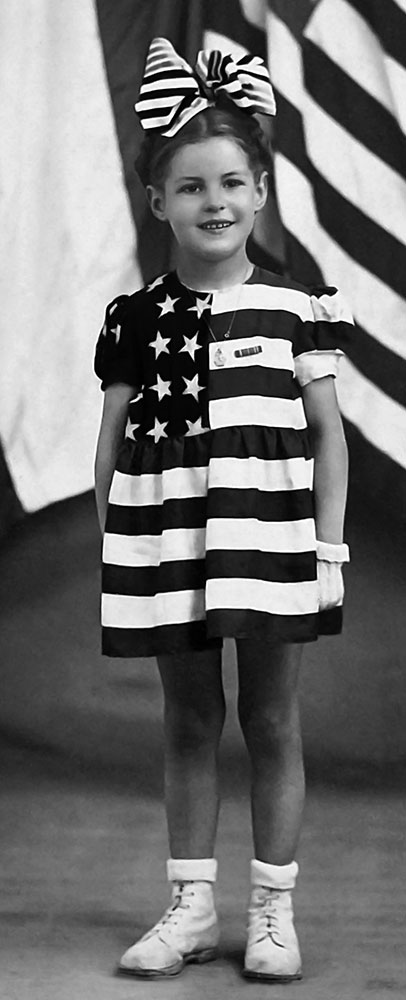
Christian Taylor, B.A. 1988, always considered herself a proud American. She is a military mom, after all. But on a summer day in 2015, she happened upon a scene in Normandy, France, that brought her understanding of patriotism to a whole new level. What she saw there would be the start of a film project that tells a little-known World War II story — told by Taylor as an “unconventional love story.”
It all started with her son Hunter, the oldest of her four boys and a member of the U.S. Army’s 101st Airborne Division. The 101st is the storied division of paratroopers that, along with the 82nd Airborne, dropped more than 13,000 airmen behind enemy lines during the dark of night on June 5–6, 1944, at the start of Operation Overlord. Their mission was to secure roads and bridges leading to Normandy’s Utah and Omaha beaches, in advance of the Allied Forces amphibious landing hours later on D-Day.
In 2015, as a result of meritorious service in Afghanistan, Hunter was selected to travel with other members of the 101st to Normandy to take part in the D-Day anniversary festivities, a two-week celebration and commemoration hosted by the French people. “I had never been overseas before and I had never heard of the D-Day celebrations either,” says Taylor. “I didn’t know what I was in for, but I knew I had to go.”
With her teenage son Jacob in tow, Taylor flew to France, took a train to Caen, and rented a car to drive to Normandy. The only information Hunter could share was the date he would be serving with the honor guard in the village of Carentan. The town’s main street is known as Purple Heart Lane in honor of the American casualties sustained during the Battle of Carentan over several days shortly after D-Day.
Taylor put the little town into her GPS, but still they got lost on rural roads. Spotting what they thought was an American military jeep with U.S. soldiers, they followed behind. When the jeep broke down, Jacob ran over to ask directions. “He came back and said, “Mom, they’re French, they don’t speak English,’” recalls Taylor. “We were confused, and still lost. Then we looked to the sky and we followed the parachutes!”
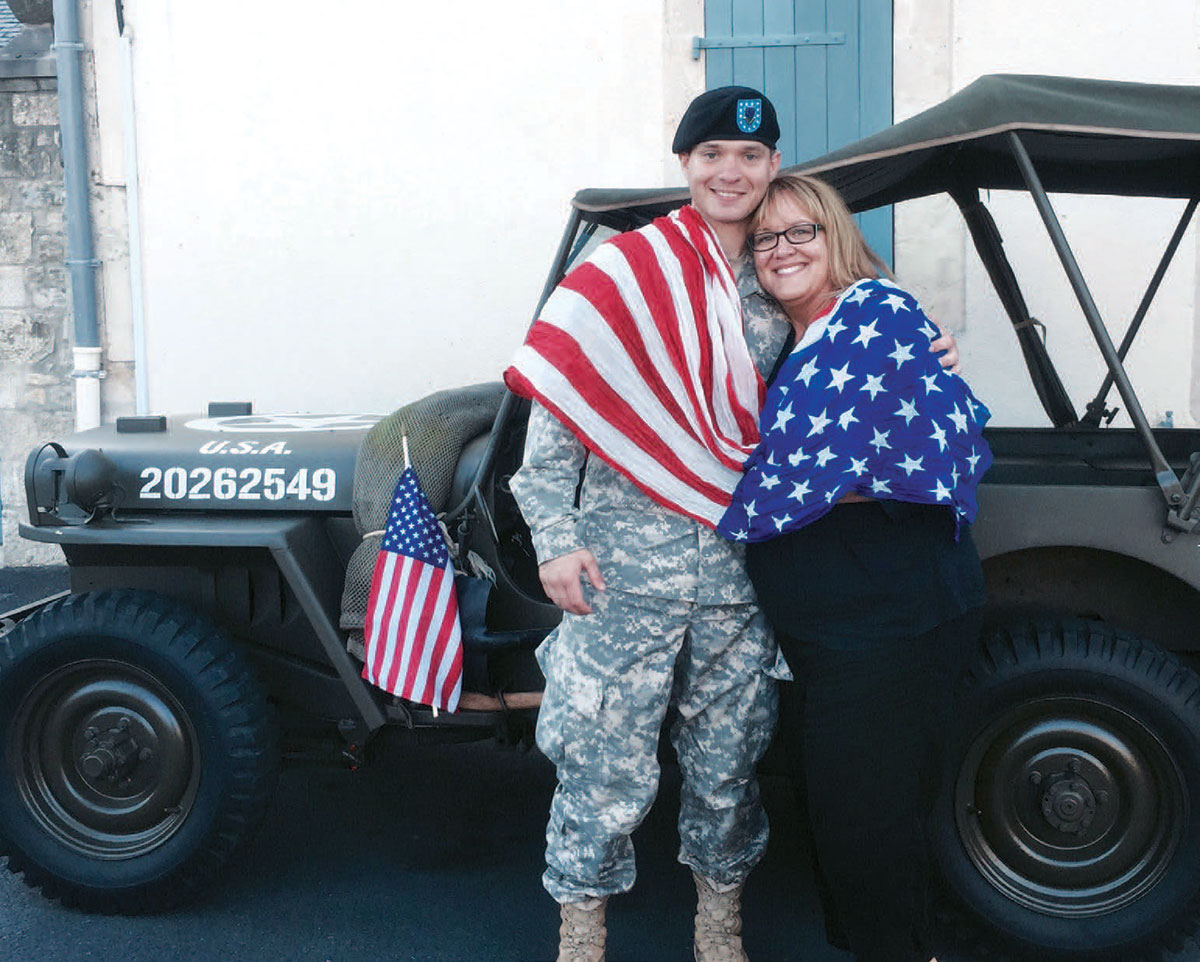
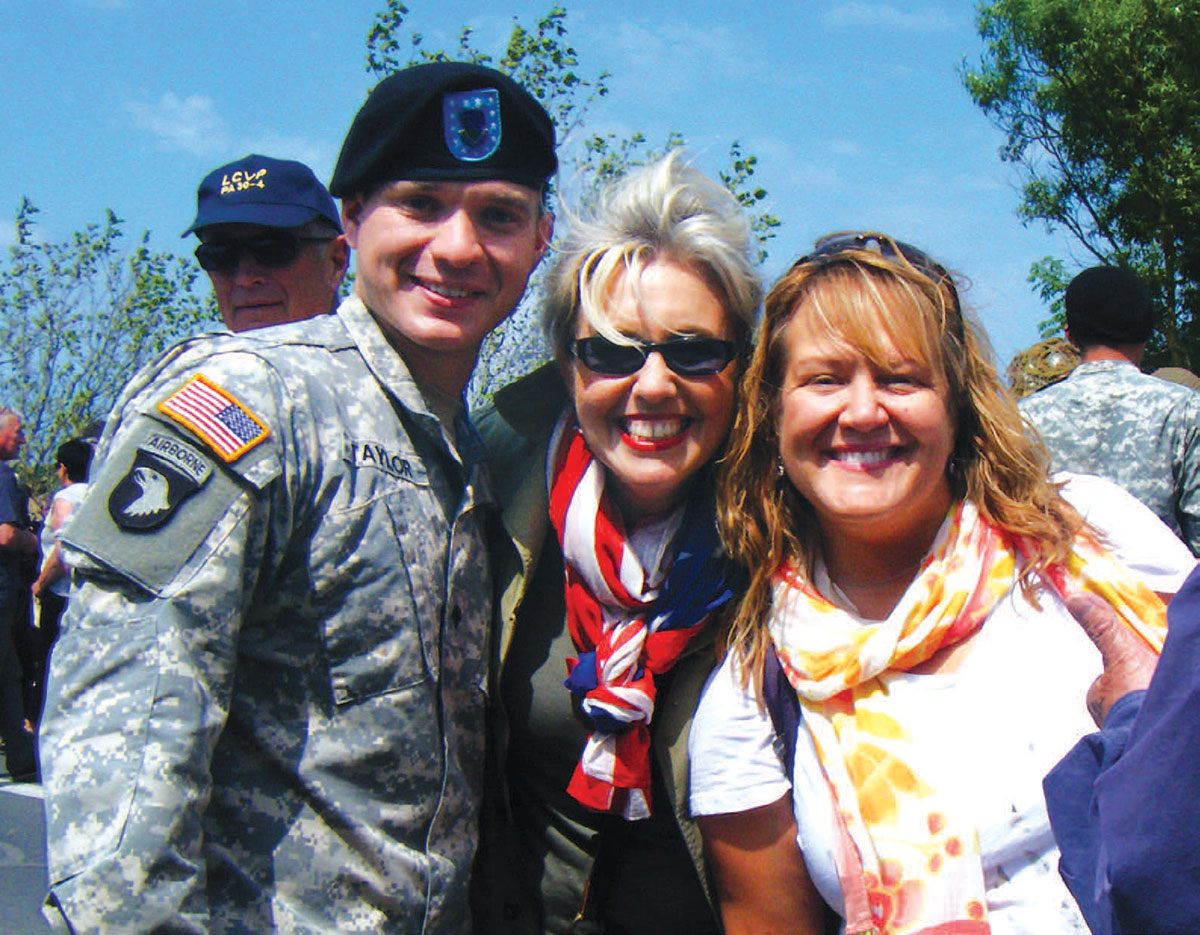
When they arrived in Carentan, Taylor and Jacob thought they had gone back in time. “We heard Glenn Miller playing on the loudspeakers. Re-enactors dressed as World War II American GIs marched in parades as French people, wearing 1940s costumes, waved American flags. ‘What was this?’ I wondered,” says Taylor.
Soon after finding Hunter, an English-speaking Frenchwoman named Flo Boucherie approached and asked if she could take a photo with him. She told Taylor the jacket she was wearing was given to her mother by an American GI in the summer of 1944.
“She took us to meet her parents Daniele (Dany) Patrix and Jean-Marie Boucherie. Dany was five and Jean-Marie was seven when the American liberators arrived. I had never met anyone who had firsthand accounts of such a monumental day in history. This beautiful couple immediately embraced us with love and gratitude — just because we were Americans!
“For the next four days they welcomed us into their home, they fed us, they took us on tours, and they told us their stories.”
Dany’s story would become the central thread weaving through Taylor’s documentary, The Girl Who Wore Freedom.
France had been under Nazi occupation for four years when Allied troops landed on the beaches in June 1944. Dany lived with her mother Cecile, her father Paul, and her older brother Francis in the village of Sainte-Marie-du-Mont, three miles inland from the beach. Her home was on the main road and she remembers the American soldiers coming past her front door with rifles ready. Not knowing where the Germans were billeted, they were suspicious of the adults. But for the children they had gum, chocolate bars, and little round candies with holes in the center (they would later learn were called Life Savers).
In the film, subtitles translate Dany’s animated recounting of a day that most know only from movies and books. “The GIs came up from the beach marching on each side of the road. In the middle there were trucks, there were tanks, there were jeeps. I stepped out, standing in the doorway and watched. I was in awe! The Americans saw a little girl on the sidewalk. Maybe they left behind a little sister or a little daughter in the United States. So they threw me chocolates, candies, chewing gum. It was falling on the ground. So I grabbed my little apron holding it out so they could aim at it.” That scene is poignantly re-enacted in the film.
Dany’s husband Jean-Marie Boucherie lived in Carentan, and remembers hearing the sound of the low-flying bomber planes, seeing the silhouettes of the parachutes falling from the sky, and standing at the window in his pajamas as his father simply said, “They are here.”
Viewers of the film are riveted as the Normans recount their memories — the fear and oppression of living under German rule, the horror of the bloodshed during the invasion, and ultimately, relief and gratitude for their freedom. One Frenchman tells of seeing his mother killed as he and his siblings sheltered during the bombings. Others reveal the sadness of watching the dead bodies transported through town in blood-soaked jeeps and then lined up as cemeteries were prepared. The villagers would later tend to the graves for the families who were an ocean away. And they tell of the friendships that formed over the summer months as Americans set up camps and began to trust the people in the French villages. Many Americans broke military rules by allowing French children to fill their plates in the mess tent.
Dany’s parents had a bicycle repair shop and her father was asked to change a jeep tire that had a nail in it. The soldiers paid him with an American flag, and Paul told them German snipers were hiding in the church steeple. With discarded parachute material found in the fields, Cecile made a dress for Dany to resemble the American flag. On the first anniversary of D-Day, the little girl wore that dress as she took part in the commemoration ceremony. The dress is now in the Utah Beach Museum.
“Dany took me to the museum to see the dress, along with all of the exhibits that preserve the memory of that historic summer,” says Taylor. “I was amazed by the Normans’ dedication to honoring those who gave their lives and risked their lives to liberate them. They treat Americans like superheroes, especially World War II veterans, who they have honored for more than 70 years at their anniversary celebrations, raising money to fly them to France and hosting them in their homes.
“Each year French citizens invite American units to join their commemorations, to serve as honor guards and to participate in parachute jumps. They have parades, dances, fireworks, and dinners for the troops and veterans. They have somber wreath-laying ceremonies to honor the thousands who lost their lives. Most Americans don’t know this goes on. I didn’t. I found myself asking ‘how had this love and gratitude lasted all these years?’”
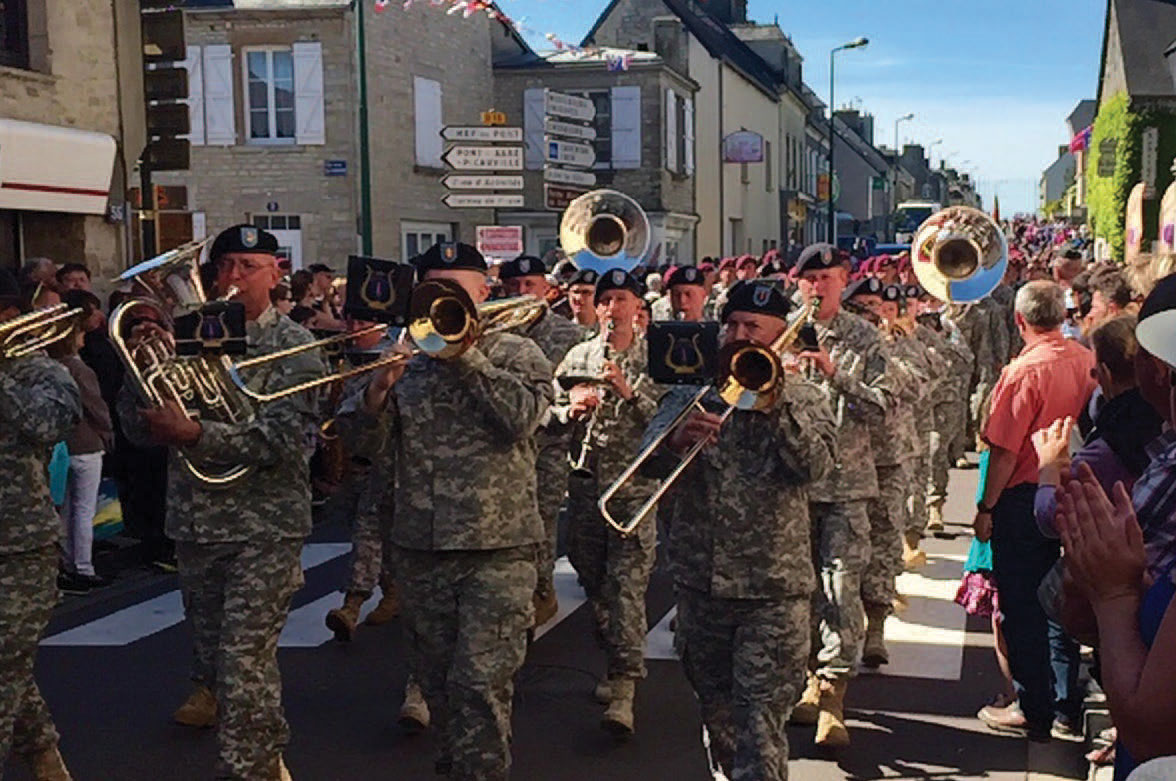
As Taylor sought the answer, she began to think about a film. “When a great story like this comes your way, you have to jump in with both feet.” So she called upon her background in the entertainment industry — a background cultivated in Catholic University’s Department of Drama.
Taylor was awarded the first Ed McMahon broadcasting scholarship, then newly established by the famous alumnus. “I loved my time at Catholic. I learned about voice-over work, I worked in the costume shop, I performed, and I enjoyed every aspect of my liberal arts education,” she says. During her first year on campus she got to know Father Gilbert Hartke, founder of the University’s Department of Speech and Drama. (He passed away at age 79 in 1986.) Taylor says she treasures her memories of working with the “Show Biz Priest” even though it was just for that one year. “He wrote me positive notes on my performances, which I still have to this day.
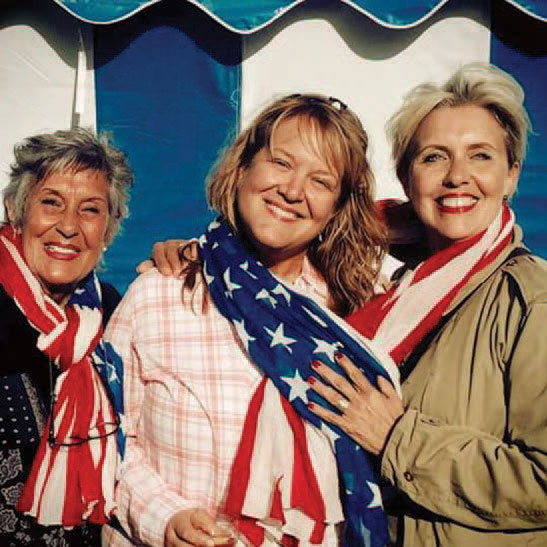
The department had so many phenomenal teachers — Janet Waters, Bill Graham, Ed Cashman. I soaked up everything they had to offer.” By the end of her senior year, Taylor was cast as an actor with the well-known touring theatre company, the National Players. After nine months on tour, she returned to D.C. and worked in broadcasting for the Senate Republican Conference. She married her husband Jeremy and started a family.
She put her career on hold as she raised her children. They moved to Chicago in support of Jeremy’s legal career. “About 15 years ago, my husband suggested to me, ‘It’s time to do what you were trained to do.’ Chicago was a new market for me. In order to find work, I knew I would have to diversify.” She started in radio and through networking, her résumé grew to include voice-over and on-screen work, producing, directing, casting, and coaching. By the time she found herself in Normandy four years ago, she had her own production company and was poised to put her diverse experience and contacts in the entertainment industry to work on the documentary.
One of the first people she called was old friend Corey Johnson, a drama classmate she met during her first year on campus. “Corey has a vast film career including roles in Band of Brothers and Saving Private Ryan. He had that experience with military films, but most important, I trusted him and he became an important consultant on the project. I wanted to surround myself with a team of passionate people from diverse backgrounds.”
Before long, Taylor had a team of writers, translators, production assistants, directors, editors, videographers, and consultants, most working as volunteers.
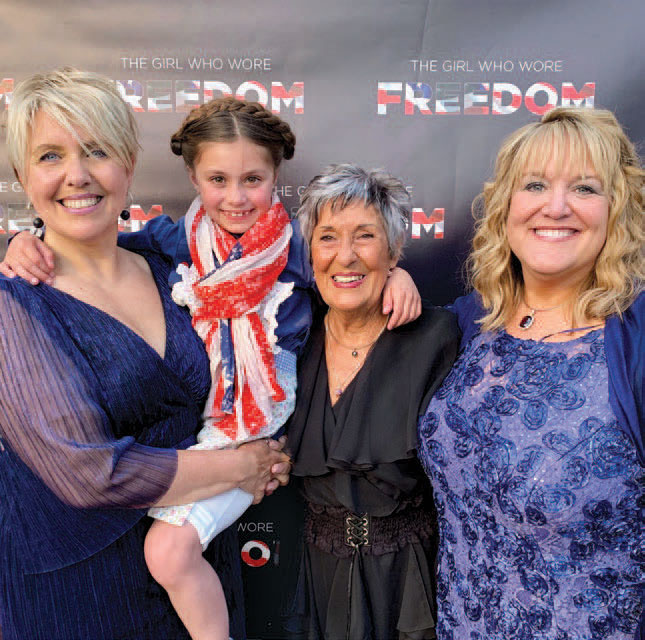
The project started with massive amounts of research, and in 2017 she made an exploratory trip to Normandy to gauge support for the film, conduct interviews, and find partners. The support was overwhelming and she set a goal of having a film to screen in Normandy at the D-Day 75th anniversary ceremonies in June 2019. Most of the filming took place over three weeks during the 2018 commemoration, followed by months spent editing hundreds of hours of film, writing, fundraising, and additional filming of veterans in the U.S. Taylor directed, co-wrote, co-produced, and voiced the film. “To the best of my knowledge, I am the first woman to direct a World War II movie. I think perhaps this story of love needed a woman’s touch,” she says.
Taylor screened the documentary this past June at the Utah Beach Museum with the world’s eyes on Normandy as D-Day was remembered 75 years on. “So many French citizens came to me after with tears in their eyes. One told me ‘I’ve had this story inside me for 75 years, and now it is told,’” says Taylor.
Post-production work and screenings are ongoing as she continues to get the film ready for distribution and film festivals.
At an October screening at the University Club in Washington, D.C., nearly 150 guests arrive. They enjoy refreshments and browse a table of World War II artifacts including a replica of Dany’s “Freedom” dress. Another table has boxes of tissues that, based on audience experience so far, will be needed.

As the lights dim, the film opens to drone footage sweeping over the beaches, fields, farms, and cemeteries of Normandy. Taylor’s calming, captivating voice takes viewers on the journey of The Girl Who Wore Freedom. The invasion and liberation are recounted with historic video and photos, with re-enactments, and through mesmerizing interviews with the citizens of Normandy. The tissues are out as World War II veterans, now in their 90s, speak of their memories — the brothers who made it to shore but never returned home. They share their complete awe of the Normans’ continued gratitude and kindness.
In the film, Taylor’s voice is heard over scenes of veterans being embraced upon their return to Normandy: “I learned something so simple and so profound. The simple act of caring, asking thoughtful questions, showing genuine interest in these former service members, and actually taking the time to listen to their stories is the greatest act of love and honor these veterans can ever hope for, and one they so richly deserve.”
There are several distinguished guests at the D.C. screening including two U.S. generals. But the guest who brings the audience to its feet for a prolonged ovation is World War II veteran, Retired Army Col. Edward Padelford. Taylor introduces him as “one man representing a generation.” He bows his head with humility.
Photos courtesy of NormandyStories.com